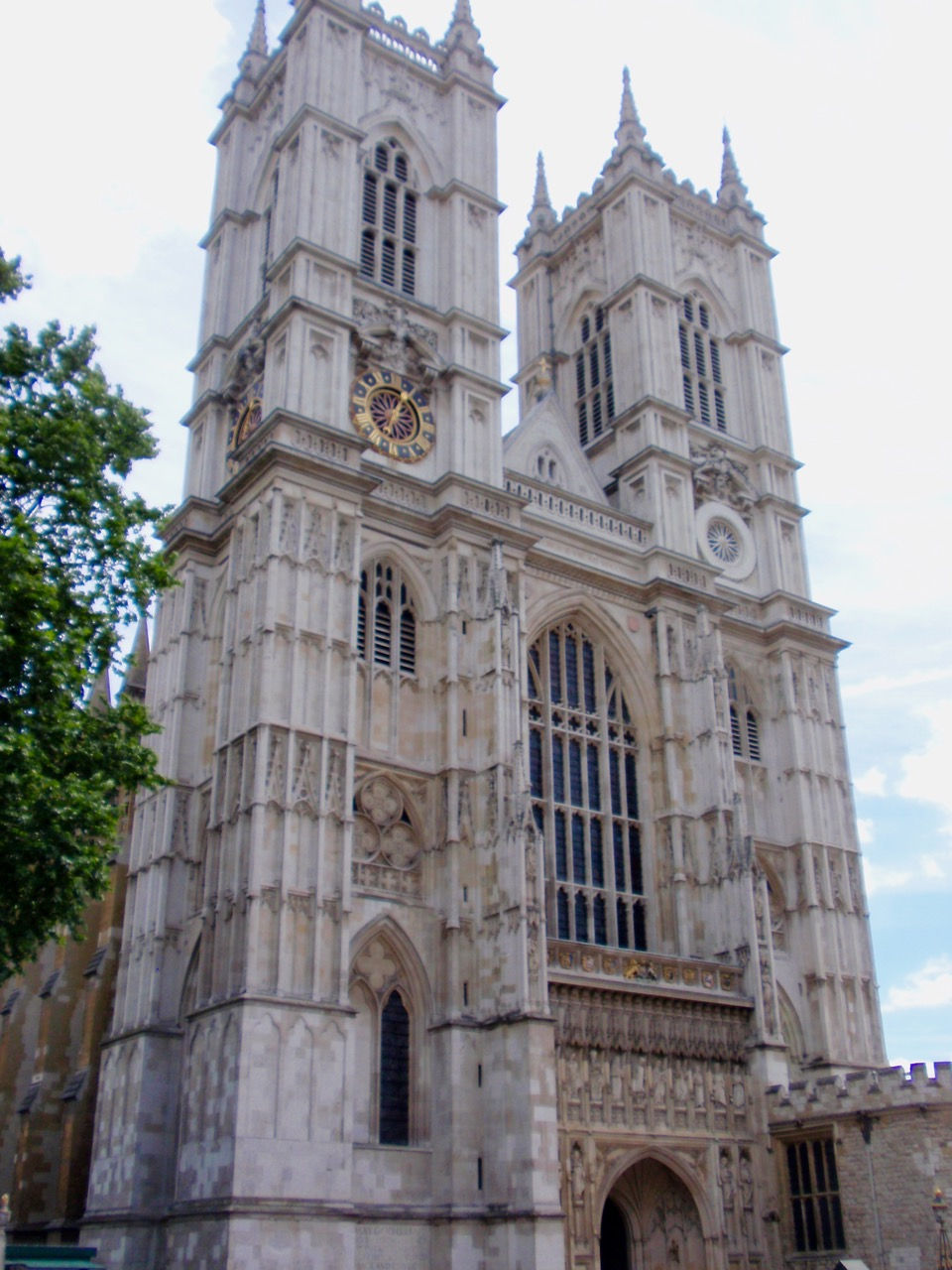

Savvy Sightseer - tips and insights for seasoned travelers!



The International Eurostar station stretches out from the back of the hotel across the street from the entrance to King's Cross station.
Southern England
London
Westminster Abbey
One of the most visited (paid) attractions is Westminster Abbey. Some consider it more a historical site than a religious site. Since 1066 every royal coronation, with the exception of Edward V and Edward VIII, has taken place in this church. It’s also a massive burial site, with about 3300 interred in the church and cloisters. Some of the most famous include Elizabeth I and her cousin, Mary Queen of Scots. Scientists are there as well: Charles Darwin, Sir Isaac Newton and David Livingstone. But it is the Poets’ Corner that draws many visitors and lists as a Who’s Who of required high school reading. Literary greats, such as Shakespeare, Chaucer and Charles Dickens are either entombed or memorialized under a massive rose window.
A church has stood on the grounds since the 8th century, but the history of the current abbey really starts in 1050, when King Edward The Confessor decided to build a monastery. And it’s not done evolving just yet. It’s something of a work in progress. As recently as 1998 new sculptures were added to the already statue-heavy building, giving an American a venerable spot above the west entrance. Ten previously empty niches were fitted with images of people who died for their beliefs in the tribute called Martyrs of the 20th Century.
In 2018, a new addition was made to the Abbey. The Queen's Diamond Jubilee Galleries debuted on an elevated internal gallery, 70-feet above ground, across three walls and 9,600 square feet. Access is possible through a stair and elevator tower added to the church’s east side. The exhibition reflects the Abbey's thousand-year history, with displays of artifacts and treasures, many of which have never been viewed by the public before. If you’ve already been to Westminster, this will give you a reason to revisit it!

Since 1066 every royal coronation, with the exception of Edward V and Edward VIII has taken place in this church.

The first to be added to the building in almost 300 years, this tower will have an elevator to take people up to a new 9,600- square foot exhibit.


Since 1066 every royal coronation, with the exception of Edward V and Edward VIII has taken place in this church.
Click the slide show above to visit Westminster; unfortunately, cameras are banned from the interior.
Churchill's Secret War Rooms

Museum gives a glimpse of Churchill at work.

Clock set just before time of first meeting.


Museum gives a glimpse of Churchill at work.
A London attraction that demands multiple visits is Churchill’s War Rooms, the underground bunker that served as England’s Prime Minister's secret command center from 1939 to 1945, and the close of World War II. An adjacent museum gives a provocative look at Winston Churchill, the man and the icon, in pre- during- and post-WW II times. It is a fascinating combination that proves too much to absorb in one viewing.
When staff turned out the lights and left the bunker for the last time, no one was really sure it wouldn’t be needed again, and so it remained completely intact until 1984 when they were first opened to the public. Even the handwritten calendar in the Maps room still bears the last date of use: August 16, 1945. Visitors here get a true sense of the beehive that operated under the streets of London.
Mannequins fill in for staff and soldiers at their work stations. Conference rooms and living quarters for everyone, including Clementine Churchill, the Prime Minister’s wife, are open to see how these people lived for six years. The museum portion is a unique biographical look at every aspect of the leader’s life, told through his trappings (including his trademark bowler hat), his booming voice, dioramas, news reports and videos – and so much more. It is a highly interactive, multimedia experience that shares insights into the statesman, family man, leader and visionary by engaging and challenging visitors with cutting edge technology and distinctively different displays.
Click the slideshow above to head below to Churchill's Command Center.
Treasures along the Thames
A fun way to spend an afternoon in London is to take a walk along the Thames and just drink in all the iconic structures, from Tower Bridge to the Houses of Parliament, and everything in between.
Click the photos below and take a walk on London's wild side!

The River Thames travels over 210 miles through the heart of some of England’s most picturesque towns, right into the center of London on its way out to the North Sea.

Though it looks like it's stone, the bridge's framework is made of steel. The stone facade was added to the bridge’s exterior to blend in with its namesake, the Tower of London on the north side of the Thames.

The fortress was built in 1078 to intimidate William the Conqueror's subjects. Originally a royal palace, it also served as a jail, and now holds the Crown Jewels.

Its unique, bold and energy efficient design has won many awards for the Gherkin, so named by Londoners for its distinctive shape.

A masterpiece of 17th century royal architect, Sir Christopher Wren, the latest cathedral to stand here is where Charles and Diana were married.

London's pedestrian-only crossing over the Thames is the Millennium Bridge—linking St. Paul's Cathedral to Tate Modern on the south side.

It opened to great fanfare in June 2000, but was quickly renamed The Wibbly-Wobbly, because it lacked sufficient stabilizers. It reopened two years later.

At 443-feet high, Coca-Cola's London Eye is the world’s largest cantilevered observation wheel. A full rotation takes approximately 30 minutes in one of its 32 high-tech glass capsules. Each capsule holds up to 25 people.

On the south side of River Thames, the Globe Theatre is a replica of the original that was partly owned by acclaimed playwright and actor, William Shakespeare.

The Palace of Westminster houses the Houses of the Lords and Commons.

Monument symbolises the unprecedented losses suffered during World War I, and is dedicated to "The Glorious Dead."

Big Ben is actually the name of the 14-ton bell inside the clock tower, now called the Elizabeth Tower.
More Thames
Although the River Thames is usually associated with London, that stretch of it is only a fraction of the waterway's 210-mile journey. It starts in the Cotswolds region and winds through several picturesque - and famous - towns, using 45 locks to move boaters along.
Click on the slideshow below to see the Thames's more relaxing side.

About 30 miles west of London, the Thames is much quieter.


This Market Cross House has a colorful history and obvious structural issues. Today it is a jewelry shop, but is better known as one of Windsor Town's most photographed buildings.

About 30 miles west of London, the Thames is much quieter.
Some Popular Stops Around London Town
A not-to-miss visit in London is to the British Museum. Founded in 1753, it houses two million years of human history, detailed through eight million artifacts. And best of all - it's free!

The British Museum was founded in 1753, the first national public museum in the world.

One of the most famous objects in the British Museum, the Rosetta Stone contains a passage carved in three types of writing. It helped experts learn to read Egyptian hieroglyphs.

A great Egyptian leader immortalized in stone.

The British Museum was founded in 1753, the first national public museum in the world.
Sometimes treasures are hidden in plain sight and passed by without a second glance by people rushing about their daily lives. Such is the case in or around some of London's train stations, or just a little out of the city center!

Free viewing platform above London Thames.


Pithy poetry from one of the United Kingdom's most recognized writers.

Free viewing platform above London Thames.
Click the slideshows above to find some more very British sights.
Continue your trip through Great Britain with a visit to Scotland, The Outlander Effect, Wales, England Home Page, North England, the Cotswolds or back to the Great Britain home page. Go to the Recipes page for English Carrot & Coriander Soup.


